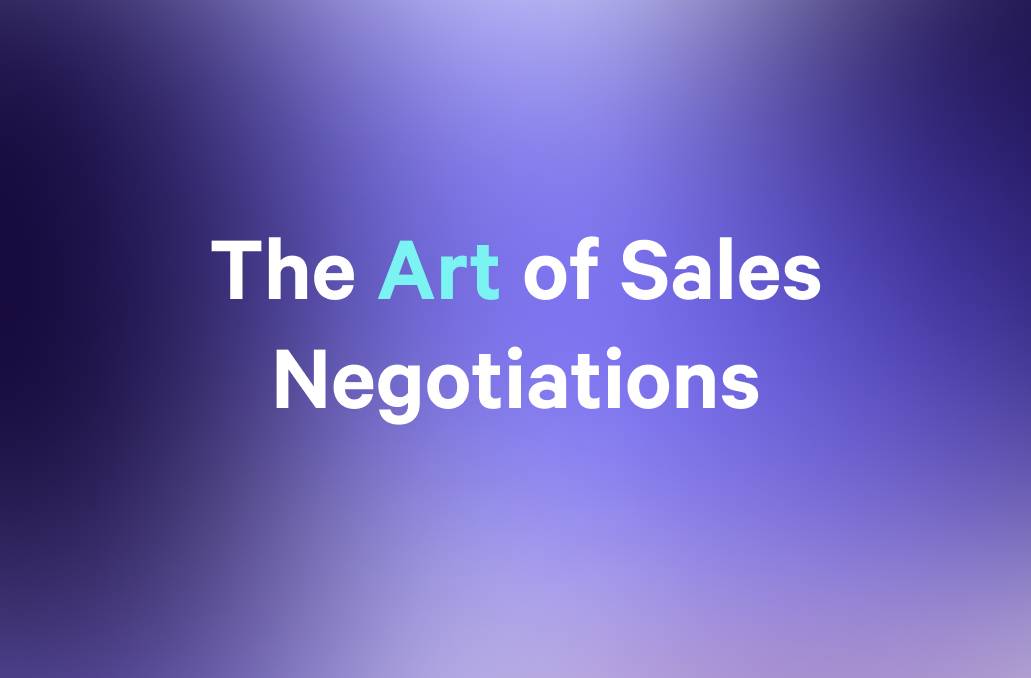In order to run or work in a world-class sales organization, sales engagement should be a critical component of your sales strategy. As selling evolves and salespeople need to respond to changes in how they manage their sales pipeline, economic climate, the buyer’s journey, and technology in play, their sales engagement strategy may also need to evolve.
Whether you’re a sales leader or an SDR in a large sales organization, this sales engagement guide will give you some new ideas for how your organization can deliver world-class customer interactions.
What is sales engagement?
If you’re not familiar with the term “sale engagement,” it refers to the ways sellers interact with buyers. Because the buyer journey is never linear, sales engagement isn’t either— there are many touchpoints, and each one should be focused on building an authentic buyer relationship and advancing the sales conversation.
The best sales engagement tactics are also tailored to the unique needs of the buyer — because buyers want a personalized buying experience, and in today’s selling environment, buyers are in the driver’s seat.
To implement a sales engagement program in your organization, you’ll want to start with designing the engagement plan. Sales leaders, with input from the sales team, can start by identifying the pain points in the sales process and what resources will be most helpful for sellers.
These resources could include playbooks, email templates, proposal templates and social selling guidelines. The team may also consider leveraging a sales enablement platform that integrates with the organization’s CRM and content management system.
In addition to the sales team, the marketing team may also support the creation and implementation of a sales engagement program.
Why is sales engagement important?
Sales engagement is important because it can help you speed up your sales cycle. By creating a comprehensive sales process for sales reps to follow, a sales engagement program provides sellers with the right resources at each sales cycle stage.
From templates for outreach to follow-up email messaging, a good sales engagement program makes these sales activities seamless. Sales leaders should also be providing support and empowering reps to leverage the materials that are part of the sales engagement program and optimize them for each specific customer and deal.
What is a sales engagement platform?
A sales engagement platform is software solution that is designed to automate the sales engagement process. Many of these tools have the functionality to integrate with a CRM or other marketing automation programs to help connect the tools used throughout the sales cycle and leverage customer data. For example, if your reps are making phone calls, the details of these calls may be logged in a CRM so that the sales rep can easily reference the contents of the call later in the sales cycle.
Popular sales engagement platforms
There are many sales engagement platforms on the market with different pricing, features, and functionality. Choosing the right software for your company will depend on your go-to-market strategy and your needs. For example, a B2B sales organization with 20 sales professionals and a few customer success team members may have very different needs than a sales organization of 200 sales professionals using an account-based sales approach. Both of these sales teams may be looking for a platform that can streamline the sales process while providing an exceptional customer experience.
Some of the most popular sales engagement platforms, according to G2, are:
- HubSpot Sales Hub
- SalesLoft
- Outreach
- Apollo.io
- Groove
- Salesforce Sales Cloud
You might be wondering how we at Qwilr fit into this process. By using Qwilr for proposals, you can reduce your sales cycle length by up to 65%. This is because we integrate with your CRM and can work in unison with sales engagement tools to provide new buyer insights and engagement data!
Sales engagement vs. sales enablement
If sales engagement is the WHAT, then sales enablement is the WHO. A sales enablement team is a group of people who provide training and resources for the sales team. The sales engagement platform becomes a distribution channel for the sales enablement materials.
The sales enablement team may be charged with creating and implementing a training program for the sales team, choosing the sales engagement software (along with other tools in the sales tech stack), onboarding new sales team members, and keeping up with the latest trends in buyer engagement and sales as a profession.
Sales enablement professionals may sit with the sales team to learn more about the customer journey or provide real-time coaching and feedback based on their experience. They may also use these observations and coaching sessions to collect information to make more data-driven decisions and provide better content for the engagement platform. It comes full circle.
The bottom line: sales enablement is about supporting the sales team, and sales engagement is about cultivating and optimizing customer interactions along the buyer journey. When doing it well, a sales engagement program is primarily about making incremental improvements to the buyer-seller relationship.
How to optimize sales engagement
Optimizing sales engagement will vary from organization to organization. But there are plenty of things you can try to find out what is working (and not working) in your business. Start by going through the process as if you were a customer. Set up a non company email address and phone number and explore your own sales process as if you were a target account.
What communication channels are the sales team engaging with you on? What is the sales cadence like? Are you getting too many emails or not enough? After reading (or listening to) what you’ve been sent, do you have any questions or objections?
Is the content you’re getting high-quality, or does it feel generic and impersonal? While this data will give you a good sense of what is working and what might not be, there are some other metrics you should look at that will tell you what else to optimize.
For outbound emails, you will want to look at both open rates and click-through rates. This will tell you if people are reading your emails. The first thing you’re looking for is whether or not emails are being opened. Then if there is a call to action (learn more, schedule a demo, etc.), are your customers clicking or taking any action based on the email? You can dial this in further by looking at what they are (or are not) clicking on or where in the cadence they are taking action the most.
For phone calls or webinars, you can look at a few metrics. First, are people returning voicemails, scheduling demos, or attending webinars? What is your no-show rate? If it feels too high, consider how you’re reaching out and who you’re contacting if you aren’t getting enough people interested in demos or webinars, it’s possible that you’re reaching out to the wrong people.
Need a proposal template for outreach? Consider creating some pre-sales materials in Qwilr!
Examples of sales engagement
Want to see sales engagement in action? Here are a few real-life examples of what a good sales engagement program will include.
Cold calling scripts
A good sales engagement program will include some scripts for effective outbound calls. Dialers should have the right script pop up at the right time, and this will involve tying the sales engagement platform to your CRM so that the tool knows which stage of the sales cycle your prospect is in.
Email templates
While a simple spray-and-pray approach isn’t very effective, the ability to send a lot of emails that are easy to customize and personalize for your prospects can be powerful. An effective sales engagement program should have a playbook of email templates that can be used in almost any stage of the sales process and situation you can think of. While there will always be some edge cases that require a more custom solution – these templates should cover common sales scenarios.
Email drip sequences
Having the ability to send the right collateral and sales materials to your customers at the right time is another key feature of a sales engagement program. With Qwilr, we make it easy to personalize and share sales materials with the right customers at the right time. A few quick keystrokes and your prospects will believe that your materials were designed just for them (and they’d be correct)!
LinkedIn and other social media content
Having some templates for posting on LinkedIn and other social media platforms where your customers are active will help your sales reps position themselves as thought leaders in the industry. Having content to post around new product launches, enhancements, industry trends, and even holidays will help your sales reps keep an active presence on social media without having to spend hours a day thinking up their own content.
Pro tip: remind your sales reps to engage with customers and prospects regularly too. Just posting regularly is not enough. Sellers should be engaging on these platforms to help build relationships.
The future of sales engagement
The covid-19 pandemic was the beginning of a lot of changes in how people buy. Because of this, sales engagement has also needed to evolve. While we can’t predict the future, we do think a few of the trends that have come from this evolution are here to stay. So to implement or improve a sales engagement process in your organization, you’ll want to make sure to stay ahead of the curve.
The buyer controls the sales process
Buyers have become more self-sufficient, and they probably know more about your product than you might realize. In today’s digital selling environment, prospects have likely already done research on you and your competitors before ever making contact, and you need to know what they know.
Our digital world means access to information is fairly easy. As such, sales reps and sales managers should be better educating themselves on prospects and their needs, digging deeper than job history or a basic website review. Did they just raise new funding? Are they hiring like crazy?
You’d be surprised at the sales research you can do with Linkedin, although Zoominfo and Leedfeeder are other helpful tools you might want to check into, too. Pressed for time? A quick Google search about your prospect and their company may also yield some good results.
Buying groups form to make decisions
Today, B2B sellers aren’t dealing with a buyer – singular. They’re now dealing with buying groups, and they need to prepare differently. Sellers now need to be adept at navigating organizational structures and hierarchies and building customer relationships with outside influencers— yes, even less friendly faces in finance.
According to the research behind “The Challenger Customer,” the follow-up book to the widely popular sales book (and methodology) “The Challenger Sale,” there are, on average, 5.4 different individuals with purchasing power in any given organization.
To succeed and win business in this type of environment, your sales engagement plan will need to touch all of the people who are part of the buying group. In fact, one of your first assignments, once you’re customer-facing, should be to determine who is on the buying team and where their interests and influences lie.
Another way to help yourself sell into a buying group is to make your materials easy to share. This is another plug for using Qwilr for customer engagement. When you create and use Qwilr to manage your sales materials, it’s easy to make sure everyone on the buying team has access, and gets a great first impression to your product and team.
One member of the group alone will kill a deal
When you have a buying group, it’s important to take the temperature of the entire group periodically. You’ll be trying to seek out who in the group can (and will) say no to moving forward with the deal.
If you’re familiar with Miller Heiman Strategic Selling, you know that in this sales methodology, the buying team is assigned roles. There are several members of the team that can say yes and others who can say no. There may also be a power player in the group who can say no when everyone else says yes, or who says yes when everyone else says no. Finding out who these people are in your deal will be critical to your success and help you avoid surprises later.
Social selling is critical to success
Since we already talked about how much information is already “out there” about you and your company and how the amount of information will continue to grow, we’d be remiss not to point out that social selling is imperative in this day and age as well as into the future.
Social media can help give you the ability to control the narrative. From equipping your sales development reps with content to share early in the sales process for those who are at the top of the funnel to sharing some impressive thought leadership content that may speak directly to those who are almost ready to buy, your social presence can give you a leg up on the competition.
Buyers and buying groups seek trusted advisors
Making a complex purchase is time-consuming for buyers. They’re doing more self-discovery because often it’s easier to juggle with all of the other competing priorities – both at work and at home.
So when a buyer does reach out, they’re not just expressing interest in what you have to offer— they need your help. The buyer wants you to be an expert on the market and how you can help them, not just someone who shows up and delivers a canned sales pitch. They came to you to solve a problem or accomplish a specific objective; evaluating your product is just part of the equation. Respect their time by adding value to your conversations and providing insight beyond the information on your sales sheet.
You might even go so far as to ask, “What will make this call (or meeting) a valuable use of your time?” Your buyer (and any stakeholders) will most likely happily chime in with the answer, which gives you great insight and direction for the call, too.
FAQs
What is pre-sales engagement?
Pre-sales engagement is the activities that come before your first interaction with a customer. In a pre-sales engagement phase, members of the sales team are doing all of the activities that will set you up for a successful sales engagement. Some activities in this phase might include sales outreach and prospecting, and qualifying inbound leads.
Final thoughts
Sales engagement is a critical function in a modern (and future) sales organization. Choosing the right sales engagement technology is important to the success of your team and your ability to go through your sales cycle efficiently.
About the author

Marissa Taffer|Founder & President of M. Taffer Consulting
Marissa Taffer is the Founder & President of M. Taffer Consulting. She brings over 15 years of sales and marketing experience across various industries to a broad range of clients.


